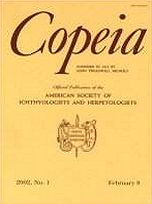Rana sylvatica (Wood Frog) tadpoles subsist as microphagous suspension feeders but opportunistically prey on macroinvertebrates and embryos of Ambystoma maculatum (Spotted Salamander). We conducted two mesocosm experiments to determine whether breeding phenology and presence of Rana affect the growth, time to metamorphosis, and survival of Ambystoma (Experiment 1) and whether Rana density and access to Ambystoma embryos affect the growth, duration of larval period, and survival of both species (Experiment 2). Rana did not affect Ambystoma embryonic survival in either experiment. In Experiment 1, seasonal time of oviposition did not affect the overall response of Ambystoma larvae; however, Rana presence decreased larval survival and prolonged time to metamorphosis. In Experiment 2, relatively high tadpole density significantly reduced Ambystoma survival and decreased Rana survival, growth, and development. The results of this and other studies suggest that R. sylvatica may adversely affect A. maculatum through an array of context-dependent interactions, including indirect food web alteration, direct competition for benthic macroinvertebrates and zooplankton, and consumption of embryos. We provide a conditional interpretation of community organization that encompasses bottom-up and top-down effects generated by Rana on community members.
BioOne.org will be down briefly for maintenance on 17 December 2024 between 18:00-22:00 Pacific Time US. We apologize for any inconvenience.
How to translate text using browser tools
1 December 2004
Ecological Interactions between Rana sylvatica and Ambystoma maculatum: Evidence of Interspecific Competition and Facultative Intraguild Predation
Carter Tate Holbrook,
James W. Petranka
ACCESS THE FULL ARTICLE





